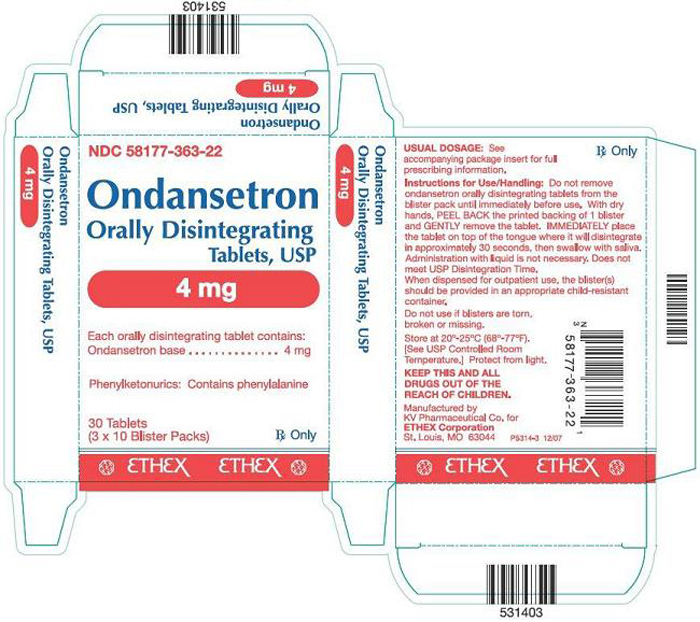Zofran: Dosage, Side Effects & Pregnancy

Zofran is the brand name for ondansetron, a prescription medication that is used to prevent nausea and vomiting. It is most often prescribed for cancer patients as a way to help prevent the nausea caused by chemotherapy, radiation and surgery. It is sometimes prescribed for pregnant women dealing with morning sickness.
Zofran is a serotonin 5-HT3 receptor antagonist that works by blocking serotonin’s function, which can cause nausea and vomiting.
"When chemotherapy is administered, it can release serotonin from various structures," including the stomach, intestine and brain, said Dr. Nagashree Seetharamu, an oncologist at the North Shore Long Island Jewish Cancer Institute at Lake Success in New York. When serotonin is released, it can initiate a vomiting reflex.
"By interfering with that process, Zofran can prevent this," she said.
Dosage
Zofran is available as an oral tablet, rapidly disintegrating tablet (ODT), as a liquid and occasionally given via injection. The first dose is usually taken 30 minutes before chemotherapy begins, one to two hours before radiation begins, or one hour before surgery begins. Sometimes, patients take additional doses one-to-three times a day during chemotherapy or radiation and for one or two days after finishing treatment.
Adults typically take one 8-mg tablet or rapidly disintegrating tablet or 10 mL of liquid twice a day. For patients ages 12 and older, the dosage is the same as for adults. For those ages 4 to 11, patients should take a 4-mg tablet or rapidly disintegrating tablet or 5 mL of liquid three times per day.
Get the world’s most fascinating discoveries delivered straight to your inbox.
Zofran can be taken with or without food, and patients can continue their normal diet while taking Zofran. Patients should limit alcohol consumption.
In the case of a missed dose, patients should take Zofran as soon as possible — unless it is almost time for the next dose, in which case they should skip the missed dose. If a dose is missed and the patient feels nauseated or vomits, he or she should take the missed dose as soon as possible.
Zofran ODT
Zofran ODT is an oral rapidly disintegrating tablet that dissolves quickly on the tongue.
It's important that Zofran can rapidly disintegrate on the tongue. Some cancer patients have difficulty swallowing pills, and it's not always convenient for them to come into a medical center to receive injections, Seetharamu said.
Those taking rapidly disintegrating tablets should be careful in how they remove the tablet from the package. It is important to not push the tablet foil backing, but to use dry hands to peel back the foil backing. Remove the tablet gently and immediately place it on the top of the tongue. The tablet will then dissolve in a few seconds. It can be swallowed with saliva. Taking Zofran ODT with water may increase the risk of a headache.
Side effects
There are some side effects associated with Zofran. The National Institutes of Health lists the following as common side effects. If experienced severely or for a prolonged amount of time, a doctor should be consulted:
- headache
- diarrhea
- constipation
- weakness
- tiredness
- dizziness
The following are more serious side effects. If experienced, patients should consult their doctors immediately:
- blurred vision or vision loss
- rash
- hives
- itching
- swelling of the eyes, face, lips, tongue, throat, hands, feet, ankles, or lower legs
- hoarseness
- difficulty breathing or swallowing
- shortness of breath
- noisy, high pitched breathing
People taking antidepressants or other medications that involved with serotonin should not take Zofran. Mixing these medications can result in serotonin syndrome, which happens when large amounts of serotonin accumulate in the body. Symptoms range from shivering and diarrhea to muscle rigidity, fever and seizures, according to Seetharamu and the Mayo Clinic.
Symptoms of overdose from Zofran are:
- sudden loss of vision for a short time
- dizziness or lightheadedness
- fainting
- constipation
- irregular heart beat
Those who suspect Zofran overdose should call emergency services or poison control immediately.
Zofran and pregnancy
Zofran may be prescribed to pregnant women experiencing morning sickness. It may be prescribed as a tablet, liquid or as an orally disintegrating tablet (ODT).
Though Zofran is often effective in curbing pregnant women’s nausea or vomiting, the safety of the drug for the fetus is still under study. A January 2012 study looked at more than 4,500 women who experienced nausea and vomiting during pregnancy and more than 5,800 controls. The researchers found that taking ondansetron during the first trimester of pregnancy was associated with a twofold risk of birth defects, such as a cleft lip or palate, compared with women who didn't take the medication.
However, a February 2013 study found no significant risk of adverse fetal outcomes among mothers taking Zofran. In 2013, the FDA announced a potential safety issue for mothers taking Zofran, though was careful to note that, “listing of a drug and a potential safety issue … does not mean that FDA is suggesting prescribers should not prescribe the drug or that patients taking the drug should stop taking the medication.”
It is unknown whether Zofran transfers into breast milk. Pregnant women with questions about Zofran should talk to their doctors.
Additional reporting by Laura Geggel, staff writer. Follow her on Twitter @LauraGeggel. Follow Live Science @livescience, Facebook & Google+.
Additional resources
- Learn more about the oral and injection routes of Zofran at the Mayo Clinic.
- More lawsuits about alleged birth defects are being filed, according to Lawyers and Settlements.
- Read about ondansetron at the National Institutes of Health.
Jessie Szalay is a contributing writer to FSR Magazine. Prior to writing for Live Science, she was an editor at Living Social. She holds an MFA in nonfiction writing from George Mason University and a bachelor's degree in sociology from Kenyon College.


